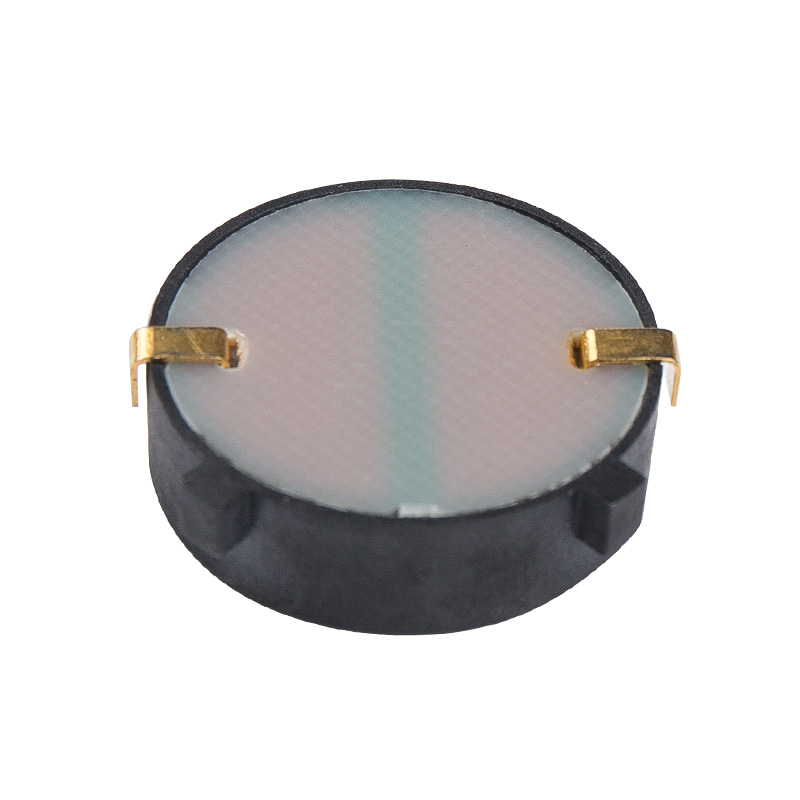The Sound Pressure Level (SPL) of SMD medical buzzers thin can vary depending on the intended use, environment, and design specifications of the device they are integrated into. In general, the SPL range for these buzzers is designed to be effective in various medical settings while also taking into account factors such as power consumption, device size, and user comfort.
1. Low SPL Range (50-70 dB SPL)
For certain medical applications, particularly those involving close proximity to patients or users, the SPL is deliberately kept at a lower level to avoid causing discomfort or unnecessary disturbance. Buzzers in this range are commonly used in portable medical devices, hearing aids, status indicators, or monitoring devices where subtle notifications are needed. The SPL in this range ensures that the alert sound is audible but not intrusive, especially in environments like hospitals or clinics where excessive noise could be harmful or disruptive to patients. This SPL is also ideal for applications in which the sound serves as a soft reminder, such as monitoring a patient’s vitals or reminding a user of scheduled medication.
2. Medium SPL Range (70-85 dB SPL)
A typical SPL range for many general medical devices falls between 70 dB SPL and 85 dB SPL. This SPL range is commonly used in infusion pumps, temperature monitors, blood pressure monitors, and other medical devices that need to produce clear and audible alerts in environments with moderate noise. These devices often operate in standard hospital or clinical environments, where background noise from equipment, staff conversations, and other machines can make it challenging to hear alerts. A buzzer with an SPL in this range provides sufficient volume for the user or medical personnel to hear the alert without being overly loud or jarring. It also ensures that patients do not feel disturbed by excessively loud sounds during their recovery.

3. High SPL Range (85-100+ dB SPL)
In more critical medical applications, such as defibrillators, emergency equipment, and alarm systems for life-saving devices, a higher SPL is often necessary to ensure that the buzzer can be heard over loud environmental noises. SMD medical buzzers thin used in such devices are typically designed to produce an SPL between 85 dB SPL and 100 dB SPL, and sometimes even above 100 dB SPL. These devices are used in emergency or critical care settings, where immediate attention is required, and the buzzer must overcome the noise of multiple alarms, machinery, and staff conversations. The high SPL ensures that critical alerts and warnings are heard promptly, reducing the chances of oversight in life-threatening situations.
4. Factors Affecting SPL in SMD Medical Buzzers
-
Size and Design: One of the key limitations of SMD medical buzzers thin is their small size, which typically results in a lower SPL output compared to traditional buzzers. The thin design often limits the size of the diaphragm or piezoelectric element responsible for sound generation. However, advances in materials, piezoelectric technology, and efficient acoustic design allow these buzzers to maintain reasonably high SPL outputs despite their small form factor.
-
Power Supply: The SPL is also influenced by the voltage and power supplied to the buzzer. Typically, a higher voltage will result in a louder sound. However, for battery-operated devices, power consumption must be optimized, meaning the buzzer needs to strike a balance between loudness and energy efficiency. For critical devices, a louder SPL is prioritized, while for portable or low-power devices, designers may opt for a more energy-efficient buzzer with a lower SPL output.
-
Frequency Range: The SPL also depends on the frequency response of the buzzer. Medical buzzers are designed to operate within specific frequency ranges that are both effective for alerting and easy to hear. For example, higher frequencies tend to be more penetrating in noisy environments, while lower frequencies can be less disturbing and more suitable for devices that don’t need to reach far distances.
-
Mounting and Acoustic Environment: The mounting and placement of the buzzer within the device or its surroundings can also affect the perceived SPL. The acoustic environment, such as the presence of sound-dampening materials, can absorb some of the sound waves, reducing the effective SPL. Proper placement and enclosure design help optimize the buzzer’s effectiveness.
5. Regulatory and Design Considerations
Medical devices that use SMD buzzers are subject to specific standards, such as ISO 13485 for medical device quality management, which may dictate certain performance requirements for audible signals. This includes ensuring that the SPL is adequate for use in a variety of medical settings, from quiet patient rooms to busy hospital wards.


 EN
EN  English
English Deutsch
Deutsch 中文简体
中文简体
